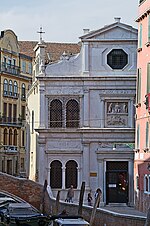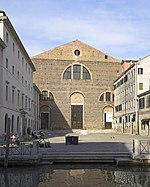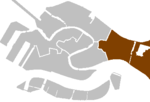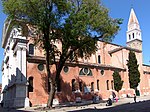San Giovanni di Malta, Venice

San Giovanni di Malta (Italian: Chiesa Priorale di San Giovanni Battista dei Cavalieri di Malta), also known as San Giovanni del Tempio or San Giovanni dei Furlani, is a Roman Catholic church in the Castello sestiere of Venice, Italy, dedicated to John the Baptist. It is believed to have been established by the Knights Hospitaller (also known as the Knights of Malta) sometime after 1187, although it is sometimes linked to the Knights Templar. The present building was constructed between 1498 and 1505, and it is located adjacent to a priory. The property was taken over by the state in 1806 and the church was closed in 1810, but in 1841 it was handed over to the Sovereign Military Order of Malta, who reopened the church in 1843.
Excerpt from the Wikipedia article San Giovanni di Malta, Venice (License: CC BY-SA 3.0, Authors, Images).San Giovanni di Malta, Venice
Corte San Giovanni di Malta, Venice Venezia-Murano-Burano
Geographical coordinates (GPS) Address External links Nearby Places Show on map
Geographical coordinates (GPS)
| Latitude | Longitude |
|---|---|
| N 45.436425 ° | E 12.346194444444 ° |
Address
Chiesa di San Giovanni di Malta
Corte San Giovanni di Malta
30122 Venice, Venezia-Murano-Burano
Veneto, Italy
Open on Google Maps











